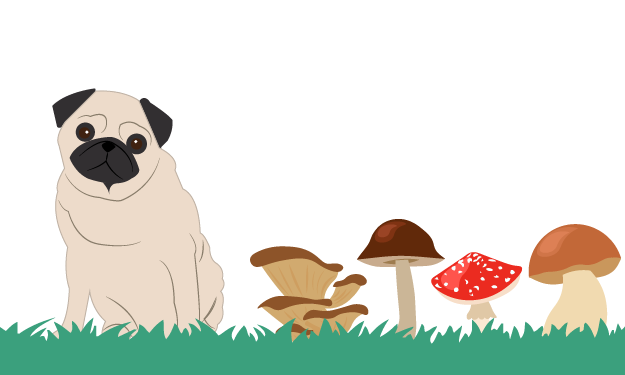Mushroom Toxicity in Pets

Depending on where you live, you may have noticed mushrooms seemingly popping up out of nowhere in your yard during certain times of the year. Prolonged periods of wet, humid weather cause fungi to sprout. That means that during rainy seasons, we see many mushroom toxicity cases in veterinary hospitals.
Essentially, 99% of mushrooms are harmless, but that 1% can prove to be quite deadly if left untreated.
How to Identify a Toxic vs. Non-Toxic Mushroom
Unfortunately, mushroom identification is no easy task and often requires the input of a mycologist (mushroom expert). Toxicologists and veterinarians find it easiest to reference mushroom experts on social media! There are many Facebook pages dedicated to mushroom identification (such as this one) which allow you to post a picture of a mushroom and obtain responses from mushroom enthusiasts.
symptoms of mushroom toxicity in pets:
While some mushrooms break down vital organs such as the kidneys or liver, others affect the central nervous system, and some less toxic ones just irritate the GI system. A few signs to look for when dealing with mushroom toxicity are:
- MUSCARINE – often cause drooling, vomiting, diarrhea, a low heart rate, and small pupils.
- MUSCIMOL and IBOTENIC ACID – cause neurologic signs; these are most common in the Pacific Northwest.
- FALSE MOREL – often cause vomiting, diarrhea, and possibly convulsions.
- HALLUCINOGENIC – causes neurologic signs and an elevated temperature (hyperthermia).
- AMANITA – the most dangerous mushroom which can cause liver failure; these are extremely toxic and are the most lethal.
My dog just ate a mushroom, what should I do?
- Contact a veterinarian and bring your dog to a veterinarian or the ASPCA poison control immediately.
- Take a representative picture or take a sample of a similar nearby mushroom with you if possible.
- Your veterinarian may involve a toxicologist and/or a mushroom identifier in your dog’s care.
- As long as your veterinarian deems it “safe,” they will likely induce vomiting and may also administer activated charcoal to prevent absorption of the toxin.
Treatment for Mushroom Toxicity
Depending on the type of mushroom ingested and the signs your dog is showing, your veterinarian may recommend very minor outpatient supportive care or more aggressive inpatient supportive care (such as IV fluids and liver supportive medications).
As mentioned above, unfortunately, Amanitins are VERY toxic, are absorbed quickly, and require aggressive care. They are also very toxic and lethal to humans.
Depending on the type of mushroom ingested, your veterinarian may recommend baseline bloodwork and/or subsequent bloodwork 4-24 hours later.
How can I prevent mushroom toxicity?
There are a few things you can do to prevent mushroom poisoning for your pets:
- Remove mushrooms that pop up in your yard in the spring/summer.
- Patrol the yard regularly- they can sprout up quite fast!
- Be observant while out on walks or hikes, especially in shady wooded areas.
- Keep your dog on a leash in areas with mushrooms.